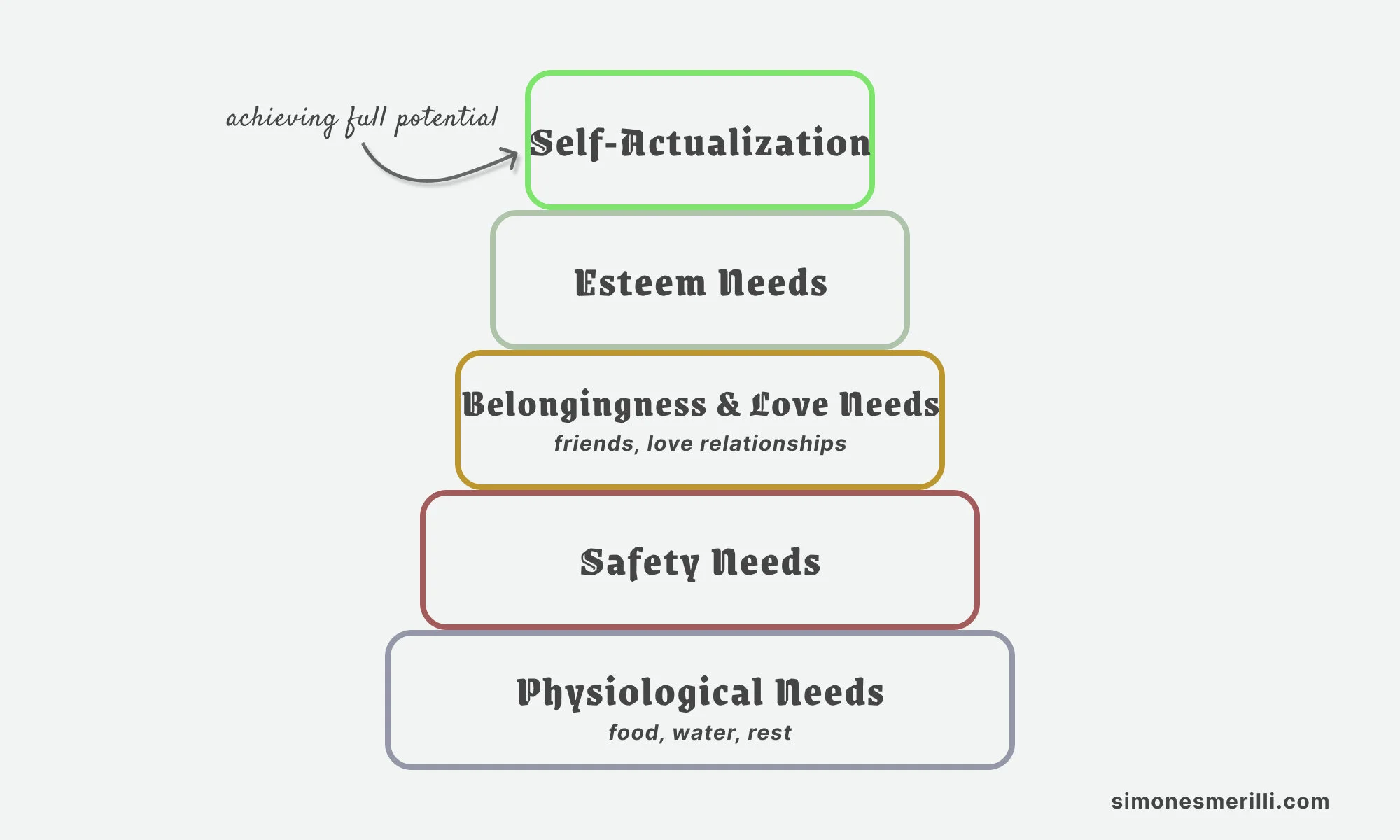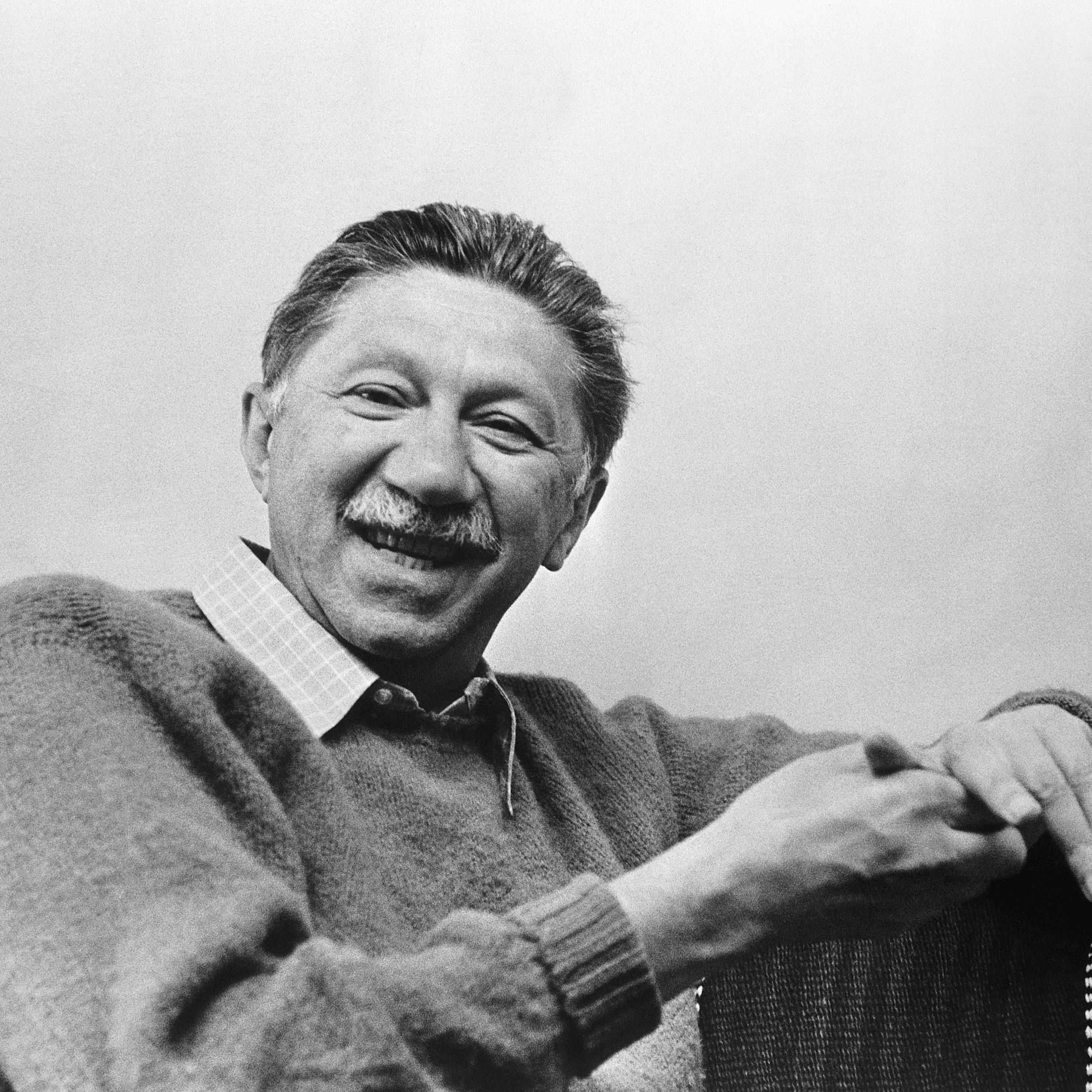Self-Actualization as The Ultimate Desire
It was 1943 when psychologist Abraham Maslow first introduced the concept of what we've later come to know as Maslow's Hierarchy of Needs, by writing about it in an American Academic Journal called Psychological Review. This seemingly simple pyramid listing human needs in a hierarchical order has become, nowadays, a widespread theory of psychological value, considered a point of reference in the field of psychology and taught in business and marketing schools all around the globe — although Maslow didn't mention any pyramid in the paper, and this theory is not backed by significant scientific evidence —.
Maslow first identified two macro categories of needs we all have: material, and spiritual needs, the latter not referring to anything related to religion, but rather to an intrinsic call for reaching our "full potential", a higher state of being that one can only achieve once the more fundamental layers of the pyramid are fulfilled.
He then went deeper into each macro area by dividing the yearnings into 5 categories: physiological needs, safety needs, belongingness and love needs, esteem needs, self-actualization.
A pyramid of needs that is valuable at any given moment in our life, and that can be climbed as much as regressed based on circumstances. We may go through a job loss and need to cater for physiological needs to a much greater extent than when we still had that job and were maybe wandering in the belongingness and love needs. Or we may win the lottery, and suddenly stop worrying about earning sufficient money for living a safe and tranquil life, and focus our attention on learning a new skill instead, or just playing the guitar, for some time.
Every human being, however, has the necessity to keep the yearnings identified in Maslow's Hierarchy at balance. We cannot meaningfully spend our time just pursuing hobbies and interests if we have not first ticked the boxes of esteem needs, safety, and physiological needs. We cannot truly step into the self-actualization domain without first having explored and fulfilled all those social and basic needs we seem to be wired to look for.
The 5 Levels of Maslow's Hierarchy of Needs
Abraham Maslow. Source: Bettmann Archive / Getty Images
Physiological Needs include food, shelter, water, reproduction. These are the very basic needs necessary for our survival. Once these needs are fulfilled, humans can move to the next level of the hierarchy.
“For the man who is extremely and dangerously hungry, no other interests exist but food. He dreams food, he remembers food, he thinks about food, he emotes only about food, he perceives only food and he wants only food.”
Safety Needs are all about health security, financial stability, emotional well being.
"Other broader aspects of the attempt to seek safety and stability in the world are seen in the very common preference for familiar rather than unfamiliar things, or for the known rather than the unknown."
Belongingness and Love Needs are still part of the lower tier of the pyramid, in what Maslow calls deficiency needs, i.e. the more practical and indispensable ones. These include the yearning to feel part of a group, have a partner, hold solid friendships.
“One thing that must be stressed at this point is that love is not synonymous with sex. Sex may be studied as a purely physiological need. Ordinarily sexual behavior is multi-determined, that is to say, determined not only by sexual but also by other needs, chief among which are the love and affection needs. Also not to be overlooked is the fact that the love needs involve both giving and receiving love.”
Esteem Needs are related to the motivation we have, once all the lower needs are satisfied, to being useful and worthy in society. Maslow divides esteem into two subcategories: self-respect (the belief that you are valuable and have growth potential), and respect from others (seeking approval, recognition, attention).
Self-Actualization , i.e. the desire to become what one really is, to achieve one's full potential. In Maslow's words, "A musician must make music, an artist must paint, a poet must write, if he is to be ultimately happy. What a man can be, he must be."
Although not scientifically sound and certainly considered by some people outdated and not rooted in today's reality, Maslow's hierarchy of needs is an evergreen theory for human motivation, taught worldwide in psychology and business schools.
It can teach us that everything in life has its place and time to take place, that we should continuously strive for improvement and aim at achieving our highest potential. It reminds us of where we are in the pyramid, and provides a light-hearted explanation of why we prioritize certain activities over others.
Maslow's Hierarchy of Needs gives managers a plausible framework of reference for having a more clear outlook on the work environment and on how to manage people in order to help them fulfill their needs and play the hierarchical game.
If you like this post, you may consider signing up for my unannoying email newsletter and I’ll send you new posts when they come out.
FURTHER READING & RESOURCES
If you enjoyed this post, you may also like:


